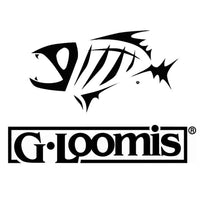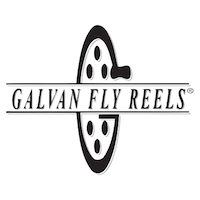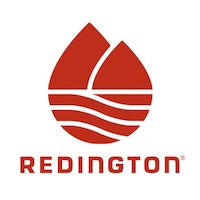Florida’s St. Johns River offers good fishing for many species of fish, both fresh and saltwater. The stretch of river running through Central Florida offers good fishing for largemouth bass and a wide variety of panfish. It is the American Shad, however, migrating upstream to spawn every winter, that draw most fly anglers out on the river.
The river flows along the east coast of the state, from Blue Cypress Lake, well south of Orlando, north to Jacksonville. The character of the river changes dramatically during its journey to the Atlantic. By the time it reaches Jacksonville, it’s a major river, harboring the port of Jacksonville and spanning hundreds of yards in width.
In its upper reaches through central Florida the river flows through and sometimes over the St. Johns Marsh, rising and falling with seasons. During drier periods the river travels from lake to lake, meandering down braided channels through a massive grassy floodplain bordered by sandhills and cypress swamps. When the rains come, the river will rise out of its banks, sometimes covering the entire floodplain in a wide sheet of water.
If you’ve ever fished the stretch of river from the upstream end of Lake Harney upstream (south), you know what a difference water levels make. Where the fish will be and how easily you can navigate the river has everything to do with the water level.
We often use realtime water level gages maintained by the US Geological Survey (USGS) to check water levels before hitting the water. To help bridge the gap between numbers on a table and what you will see on the water, we’ve put together a series of satellite images at different water levels for the areas around two of the most common boat launches.
Scroll down below the images for more explanation.
Figure 1: Water Level Comparison Near Christmas, FL. USGS Gage #2232500
https://waterdata.usgs.gov/monitoring-location/02232500/#parameterCode=00065&period=P7D
Water Level |
Gage Height (ft) |
Discharge (cfs) |
Date |
|---|---|---|---|
| Very Low | 1.35 | 106.70 | 5/29/19 |
| Moderately Low | 3.71 | 486.72 | 3/14/21 |
| Moderate | 4.42 | 682.77 | 11/20/19 |
| High | 5.74 | 1369.79 | 1/4/18 |
| Very High | 8.63 | 4774.06 | 7/13/18 |
The satellite images below show SR50 on the north side (top) with 528 near the bottom. This area is best accessed by boat from the ramp where SR50 crosses the river. You can also launch a canoe or kayak from Tosahatchee Wildlife Management Area, on the west side of the river.

Hwy. 50: Very Low Water: Too low for shad. Bass and panfish will be confined to deeper ares. Be careful of running aground.

Hwy. 50: Moderately Low Water: Water is in the banks but high enough for easy navigation. Okay for shad but there may be more fish downriver.

Hwy. 50: Moderate Water Level: Ideal for shad. Because the river is out of its banks in some areas, navigation may be difficult.

Hwy. 50: High Water: Water is too high to fish in much of the area but can be good if you run to an area where the river is in its banks.

Hwy. 50: Very High Water: Too high to fish except for way upstream, near 520, where the river is in its banks.
Figure 2: Water Level Comparison Near Above Lake Harney, FL. USGS Gage 2234000
https://waterdata.usgs.gov/monitoring-location/02234000/#parameterCode=00065&period=P7D
Water Level |
Gage Height (ft) |
Discharge (cfs) |
Date |
|---|---|---|---|
| Very Low | 0.58 | 217.67 | 5/29/19 |
| Moderately Low | 2.02 | 702.11 | 3/14/21 |
| Moderate | 3.71 | 1180.21 | 11/20/19 |
| High | 4.07 | 2419.90 | 1/4/18 |
| Very High | 8.55 | 6843.13 | 7/13/18 |
The satellite images below show the river downstream or north of the section shown above. SR46 is at the top. Puzzle Lake is the big area in the middle. You can see the Econlockhatchee River flowing from about the middle of the left side up and to the right and entering the St. Johns near SR46. This area is most easily accessed via a nice boat ramp at C.S. Lee Park, right where SR46 crosses the river. If you have a shallow draft boat you can also launch at Hatbill Park, which is just outside of the frame on the bottom right.

Above Lake Harney: Very Low Water: This is lower than we normally see during shad season. Bass and panfish will be confined to deeper areas. Only runnable in a shallow draft boat.

Above Lake Harney: Moderately Low Water: Great level for shad and other species.

Above Lake Harney: Moderate Water Level: Too high for much of the area. The area around the Econ and downstream as well as way upstream of Puzzle Lake is in its banks and may fish well. Navigation past the Econ will be difficult since the river is out of its banks and the channel is hidden.

Above Lake Harney: High Water: Higher than ideal but fishing is still possible around the Econ. The fishing is likely to be better south of Hwy. 50.

Above Lake Harney: Very High Water: Too high to fish in this area.
These images are spaced out across a wide range of water levels in two of the more popular shad fishing areas. We chose the lowest and highest levels available that matched up with good satellite imagery then found several points in between. It is certainly possible to narrow the range down more as well as to zoom in more closely.
One series shows the area around C.S. Lee Park off SR 46, near where the Econlockhatchee River enters the St. Johns. The other shows the area south of Hwy. 50 down to 520.
Water levels often change quickly based on weather conditions. It won’t be any shock that a tropical storm or hurricane can raise the water level by several feet. What is surprising is that, especially when the river is outside the banks with a lot of surface area exposed to air the river can actually drop 4” to 6” a week when cool, dry winter air moves in.
The tables above show both the gage height, in feet above a standard level, and the discharge, the volume of water moving through the river expressed in cubic feet per second (cfs). If you spend a little time looking at the numbers, you’ll notice that gage height and discharge often don’t move at the same rate.
When the river is in its channel the water is confined and the water level (gage height) rises quickly as the flow (discharge) increases. Once the river is out of its banks the water has a lot of room to spread out and the discharge will have to increase a lot more to bring the water level up significantly. For example, above Lake Harney, it takes an increase in flow from 1180.21 cfs to 2419.90 cfs, just over double, to raise the water level from 3.71’ to 4.07’, a rise of just under 11” which is a little below 10%.
If you want to do some comparison on your own, there are a number of satellite image sources that will let you choose a date. Google Earth Professional is an excellent option. The images used here are from the Sentinel-2A satellite.















Comments